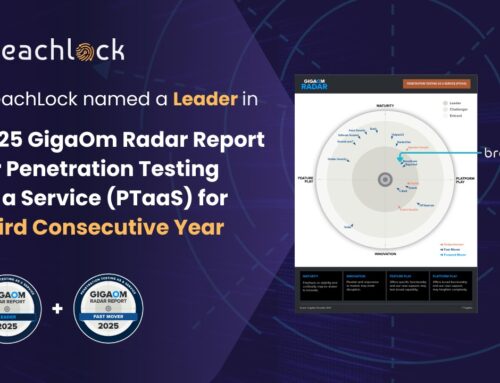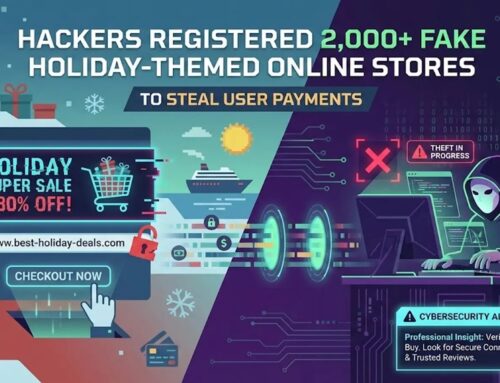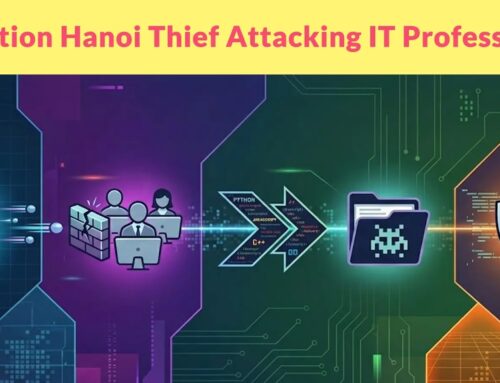
7-Zip Vulnerabilities Allows Remote Attackers to Execute Arbitrary Code
Urgent Patch Required: Critical 7-Zip Vulnerabilities Expose Systems to Remote Code Execution
A troubling discovery has sent ripples through the cybersecurity community, highlighting the persistent threat even in widely trusted open-source tools. Two high-severity vulnerabilities have been identified in the ubiquitous file archiver, 7-Zip, creating a critical window for remote attackers to execute arbitrary code on unsuspecting systems. If you’re using an older version of 7-Zip, immediate action is paramount.
These flaws, tracked as CVE-2025-11001 and CVE-2025-11002, affect all versions of 7-Zip released prior to the latest update. The core issue, stemming from improper handling of symbolic links, presents a significant risk to individuals and organizations relying on this software for file compression and archiving tasks.
Understanding the 7-Zip Vulnerabilities: CVE-2025-11001 and CVE-2025-11002
The vulnerabilities revolve around a flaw in 7-Zip’s symbolic link processing. Symbolic links, essentially shortcuts to other files or directories, can be exploited when manipulated by a malicious actor within an archive. When a vulnerable version of 7-Zip attempts to process such a specially crafted archive, it can lead to unintended execution of code.
Specifically, successful exploitation of these vulnerabilities could grant a remote attacker the ability to:
- Execute arbitrary code with the privileges of the user running 7-Zip.
- Install programs.
- View, change, or delete data.
- Create new accounts with full user rights.
The severity of these potential outcomes underscores the critical need for prompt patching. Attackers often target widely used software like 7-Zip due to its extensive deployment, maximizing their potential impact.
Remediation Actions: Securing Your 7-Zip Installation
The path to mitigation is clear and direct: update your 7-Zip installation immediately.
For End-Users and System Administrators:
- Identify Your Version: Open 7-Zip File Manager and navigate to “Help” -> “About 7-Zip” to check your current version.
- Download the Latest Version: Visit the official 7-Zip website (www.7-zip.org) to download and install the most recent stable release. This new version will contain the necessary patches for CVE-2025-11001 and CVE-2025-11002.
- Verify Installation: After installation, re-check your 7-Zip version to confirm the update was successful.
- Avoid Untrusted Archives: Exercise caution when opening archives from unknown or untrusted sources, even after patching.
Organizations should consider deploying these updates through their standard patch management processes to ensure all affected systems are secured efficiently.
Tools for Detection and Mitigation
While direct detection of a symbolic link exploit within a 7-Zip archive might be complex without specialized tools, general security best practices and endpoint protection can significantly reduce risk. Here are some relevant tools:
| Tool Name | Purpose | Link |
|---|---|---|
| 7-Zip Official Website | Downloading Patched Versions | www.7-zip.org |
| Endpoint Detection and Response (EDR) Solutions | Monitoring for malicious process execution after archive extraction | (Provider specific, e.g., CrowdStrike, SentinelOne) |
| Antivirus/Anti-Malware Software | Scanning downloaded archives for known malicious payloads | (Provider specific, e.g., Windows Defender, Avast, Malwarebytes) |
| Vulnerability Scanners | Identifying outdated software versions on network endpoints | (e.g., Tenable Nessus, Qualys, OpenVAS) |
Stay Vigilant: The Open-Source Security Landscape
This incident serves as a stark reminder that even widely adopted open-source software, presumed to be robust due to public scrutiny, can harbor critical vulnerabilities. The discovery of CVE-2025-11001 and CVE-2025-11002 in 7-Zip reinforces the need for continuous vigilance, prompt patching, and a layered security approach.
Keep your software updated, exercise caution with unverified files, and ensure your security practices are proactive. Protecting your systems from remote code execution vulnerabilities requires consistent attention and swift action.





